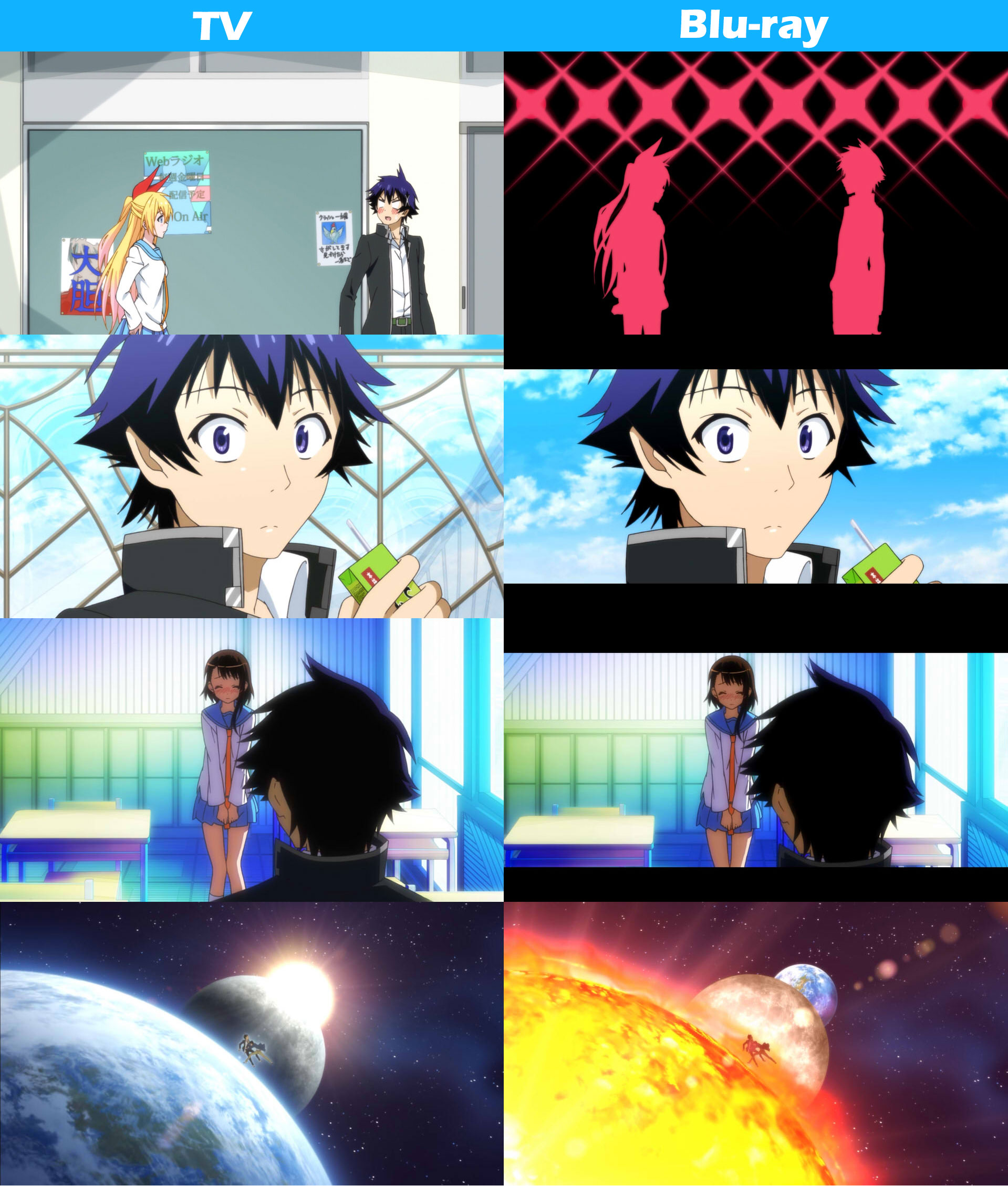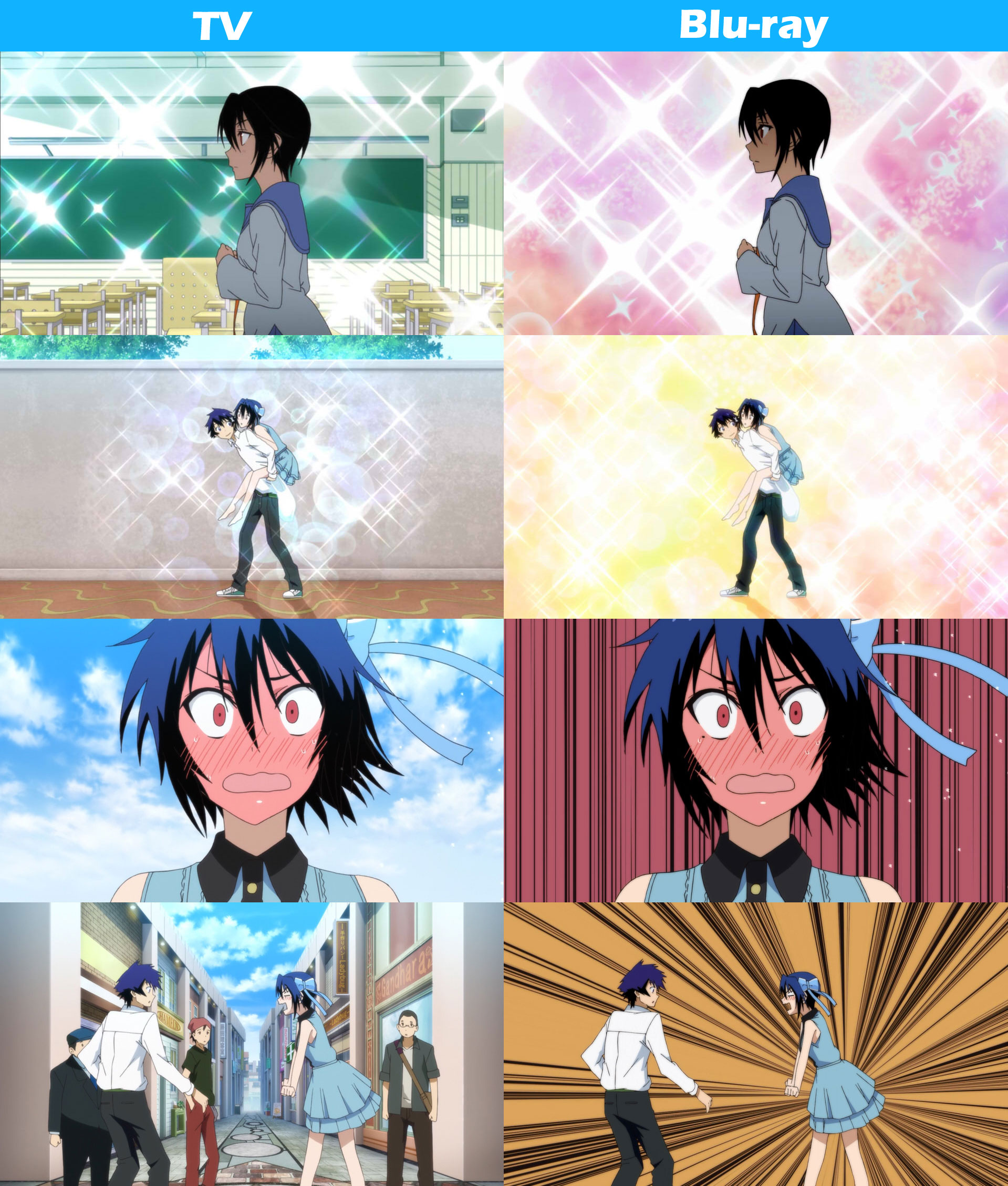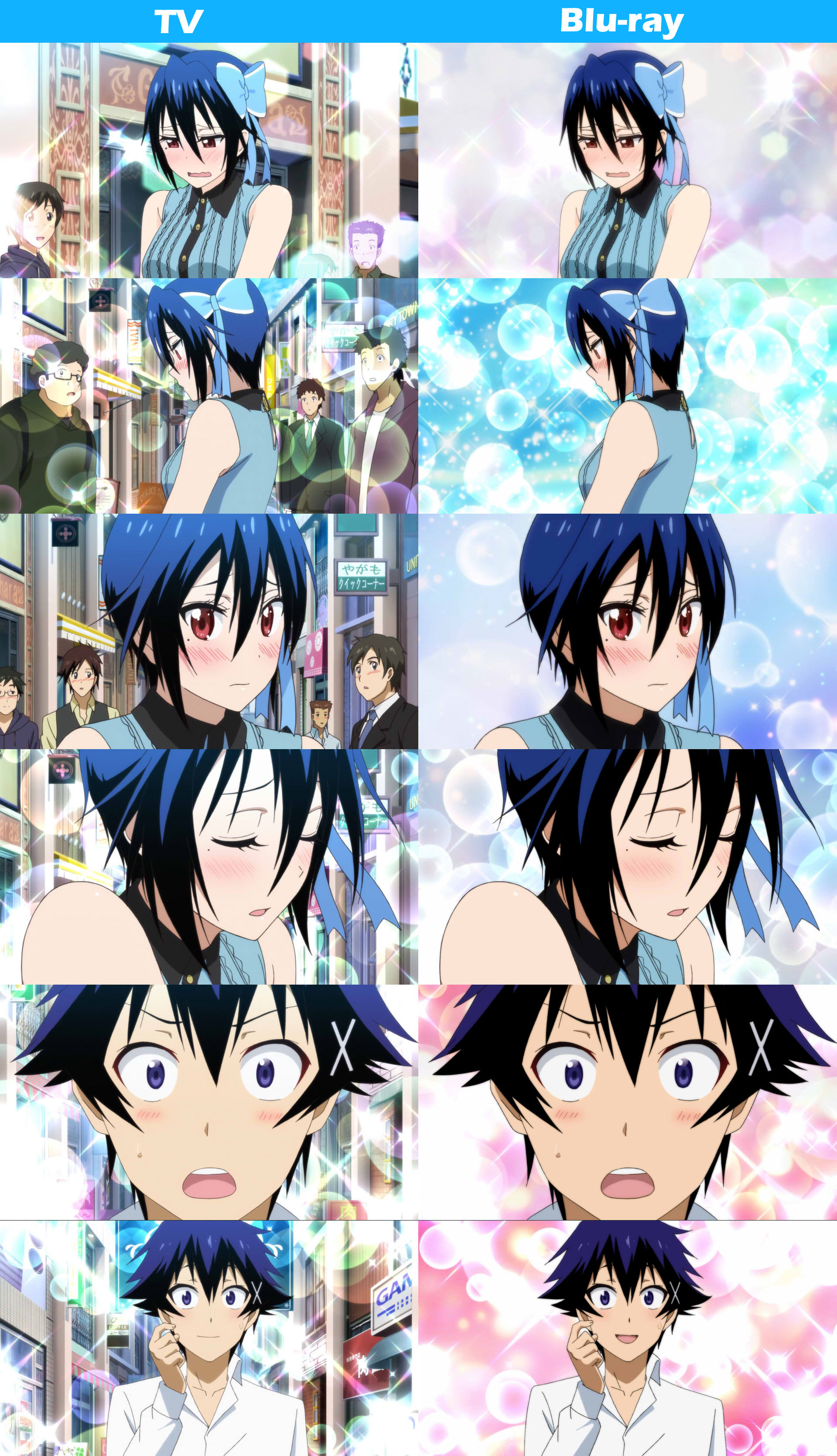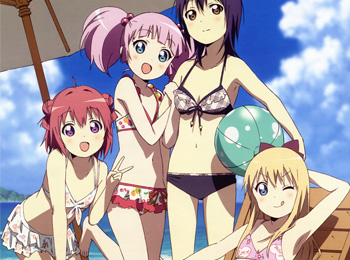One of the season’s most standout series is Nisekoi. While the show itself was visually stunning it would be interesting to see what changes and additions they make in the Blu-ray releases. Generally, the Blu-rays are better than the TV version, since they have time to reproduce scenes of the anime that may have been rushed to make schedules and deadlines, like with Non Non Biyori. Sometimes they are to uncensor the anime, like with Pupa and Saikin, Imouto no Yousu ga Chotto Okashiinda ga. But as with the Wake Up Girls! release, the quality of the Nisekoi Blu-rays isn’t much better than the TV release.
So what’s wrong with the Blu-ray releases of Nisekoi? Shaft has decided to alter the backgrounds of many scenes into more generic colours and sparkles. While it is “better” for comedic situations it removes some of the great art that the studio is known for.
So lets take a look at how the Blu-ray of Nisekoi fairs up with the original TV version.
Spoiler Warning
Click on the images for the full resolution. The images on the left are the TV version and the images on the right are from the Blu-ray release
And have a gif as well.

Nisekoi is a manga series that originally started off as a one shot from Naoshi Komi that released in January 2011. Komi then released the manga as a full series later on in the year, when it appeared in Shueisha’s Weekly Shonen Jump. Since 2011, 12 volumes have been released for the romantic comedy. Additionally a voiced comic has also been published and a light novel series. Viz Manga has also picked up the series late 2013 for English localisation, announcing that the chapters would be translated and released in Viz’s Weekly Shonen Jump Alpha. A anime adaptation of the manga aired from January this year, and ended in May. The anime is produced by studio Shaft (Bakemonogatari, Mahou Shoujo Madoka☆Magica).
Here is a plot synopsis of Nisekoi from MAL:
As a child, Raku Ichijo made a secret promise with his childhood sweetheart, keeping a pendant as a memento while his love took the key. He dreams of one day meeting his past love, but years later, reality smashes his hopes when Chitoge Kirisaki accidentally knees him in the face…
Though Raku’s a normal high schooler, his family heads the notorious yakuza gang the Shuei-Gumi faction! And he’s dragged into family affairs when he’s forced into a relationship with Chitoge, the daughter of a rival gang’s boss!

All the images above are from the Nisekoi Blu-ray Volume 3, which is currently available on Amazon Japan for ¥6,764 (~ $67.94 USD). The volume includes episodes 6, 7 and 8. The 4th volume will release on June 25, the 5th on July 23rd, the 6th on August 23rd and the final 7th volume on September 24th.
You can visit the anime’s official website here: http://www.nisekoi.jp/
And follow the Nisekoi series on Twitter: @nisekoi_k
Source Image – Reddit
“Nisekoi”, images and all associated brands and titles © 2014 Naoshi Komi, Shueisha, Shaft inc. and Aniplex




![Prison School Censored & Uncensored Comparisons [NSFW]](http://cdn-otakutale.sfo2.digitaloceanspaces.com/wp-content/uploads/2015/10/Prison-School-Censored-Uncensored-Comparisons-NSFW.jpg)

